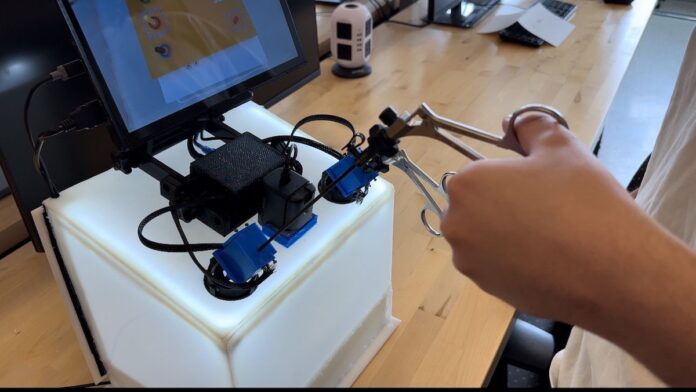
Researchers at the Children’s Hospital of Eastern Ontario (CHEO) are teaming up with Carleton University students to build an artificial intelligence simulator to help train future pediatric surgeons.
The AI simulator will assist surgeons in training for various highly technical laparoscopic procedures, which are surgeries that use small incisions in the abdomen or pelvis to examine or operate on organs.
Ahmed Nasr, a pediatric surgeon in the Division of General Surgery at CHEO, said pediatric surgeries are minimally invasive when using laparoscopic techniques, which involve camera lights and instruments to perform the procedure.
The AI simulator will “accurately” recreate this condition during training, according to Nasr.
Nasr said the idea to develop a pediatric-specific laparoscopic AI simulator began during COVID-19, when restrictions limited the number of medical practitioners in the same room.
“The AI learns from expert surgeons’ movements and provides real-time feedback to the trainees, helping them improve their skills until they’re ready for real operations,” he said.
However, Nasr said caution is important as AI continues to become integral to modern healthcare.
Although AI provides immediate feedback, he said, surgeons will not fully rely on it for final assessments.
“Human oversight is essential to ensure patient safety,” he added. “We will be present to supervise the trainees and ensure they are ready.”
Currently, four engineering students from Carleton, among others, are involved in the AI simulator project, Nasr said
Youssef Megahed, who recently completed his undergraduate degree in biomedical and electrical engineering at Carleton, said creating the AI simulator was part of his fourth-year graduation project.
He said the goal behind the AI simulator project is to allow newer surgeons to practice technical procedures without supervision from an experienced surgeon.
Although Megahed said he does not plan to become a surgeon, his interest in engineering, machine learning and AI propelled him to take on the project.
The four engineering students on the project are the second group working on the simulator in 2023 and 2024. Megahed said incorporating the work of different groups of students was important to collect the training data needed to develop the AI.
But once the data is inserted in the AI simulator, it can be a time-effective tool that allows trainees to practice small incisions while simulating realistic scenarios, he said.
“It can also alert trainees if they move outside the designated area, enhancing safety,” Megahed said.
The AI simulator has hardware components, such as sensors and microcontroller, and software components that process data and provide feedback, according to Megahed.
“We spent the first few months practising on it to generate data for evaluating performance against expert surgeons,” he said.
“After that, we need to prove its effectiveness through trials. If successful, it will demonstrate a significant impact on training quality,” he added.
Atallah Madi, who also recently graduated from biomedical and electrical engineering at Carleton, said students divided the project into four main tasks.
Madi led the hardware development aspect of the project.
“We met with surgeons who told us they were interested in capturing the push and pull force because a pediatric surgeon shouldn’t use any force at all,” Madi said. “The surgeons provided their perspective on what the simulator should have for educational purposes.”
Nasr said the first prototype will be completed a year and a half from now.
Once completed, Nasr hopes the simulator project will be accessible around the world, “especially underdeveloped countries.”
When trainees complete their original training with the simulator, Madi said an expert in the field will verify and test their abilities.
“Human expertise is crucial, both at the beginning to set performance metrics and at the end to certify trainees,” Madi said. “We’re using AI to reduce costs, not replace humans.”
Featured image provided by Youssef Megahed.





